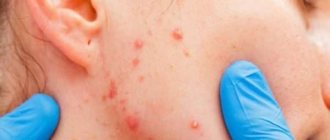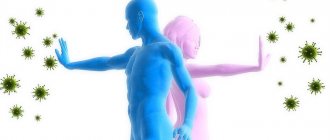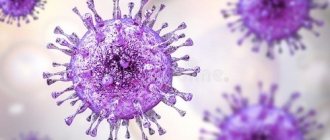When faced with a new partner or simply seeing a recurrence of a herpes infection among those close to them, many ask a fair question - how is herpes transmitted? Herpes infection, depending on the strain of the herpes virus, can be transmitted in different ways. This is both airborne and direct contact or infection through household items. But in order to understand this issue in more detail, you first need to understand what types of herpes infection are the most common.
The most commonly transmitted strains of herpesvirus
Herpes infection is one of the most common viral diseases, which is caused by several types of herpes viruses. The most common types of herpes are:
- herpes simplex virus type 1 (HSV 1), which causes herpes labialis;
- herpes simplex virus type 2 (HSV 2), which causes genital herpes;
- the varicella zoster virus, which causes chickenpox and shingles;
- herpes virus type 5, which provokes cytomegalovirus infection.
Science has proven that almost 90% of the world's population suffers from herpes. At first glance, the disease does not pose a danger, and the majority of people treat it quite lightly, perceiving it as a temporary cosmetic flaw with a certain discomfort. But many still wonder: is it contagious, is herpes transmitted from person to person, what are the ways to protect the body.
In reality, the herpes virus is very dangerous in terms of its ability to affect both the nervous system, mucous membranes of the eyes, mouth and genitals, and the internal organ system. In order to protect yourself from the danger of the disease, it is necessary to have a clear understanding of how the herpes virus is transmitted and what possible routes of transmission are the most common.
How to reduce the risk of infection
It is impossible to protect yourself from genital infection with a 100% guarantee. However, the risk of infection can be significantly reduced. To do this, it is enough to follow five rules:
- Avoid sex with casual partners.
- To avoid infecting your partner with genital herpes, you should use condoms during sexual intercourse. This reduces the risk of infection to 2%.
- If you or your partner have symptoms of illness, avoid sexual intercourse.
- Do not use hygiene items from strangers.
- Strengthen the immune system. Take special antiviral drugs during outbreaks of influenza and other viral infections.
It must be remembered that transmission of genital herpes is possible even in cases where the carrier of the virus is taking antiviral therapy. This occurs in 5-7% of clinical cases. The only reliable measure of protection is a complete renunciation of ties with a sick person, especially in the acute phase of the disease.
Infection through direct contact
Direct contact is the most common route of transmission of herpesvirus. Transmission occurs through close contact of a susceptible human body with the source of a contagious disease.
Contact can be direct or indirect. Herpes is transmitted through the touch of a healthy person with a virus carrier. Infection can occur not only during the active stage of the virus; the infection can also be transmitted from a virus carrier with a latent form.
Any close contact of the skin during a handshake, wrestling, kissing or sexual intercourse carries a real risk of infection.
The most common infections occur through the following contacts, from most frequent to least in descending order:
- From mother to baby. Usually, it is with this method that most people on the planet become infected with a herpes infection, especially the herpes simplex virus. When a mother, during a relapse of the virus, even with an invisible manifestation, kisses the baby or licks a spoon or pacifier, the virus enters the child’s body through saliva. In this case, as a rule, herpetic stomatitis begins in children, and later relapses occur in the form of colds on the lips.
- Through sexual intercourse. This is also one of the most common contact types of herpes infection. Usually sexually transmitted are HSV of both the first and second types, and cytomegalovirus, which is herpes type 5. This can be either direct sexual contact with a virus carrier, or oral sex, which often provokes infection with genital herpes, transmitting type 1 of herpes from the mouth to the genitals of a healthy partner.
- Through a kiss. Many people do not know that types of herpes such as HSV types 1 and 2, as well as cytomegalovirus, are transmitted through kissing. Cytomegalovirus usually does not have any special external manifestations, so almost the entire population is infected with it, and HSV, as a rule, is transmitted at a time when the virus carrier has an exacerbation with visible rashes on the lips or herpetic stomatitis.
- Skin contact, excluding the above methods of transmission. With direct skin contact, for example, if virus cells are present on the fingers, after the infected person has touched herpes blisters on the lips or in other places, they can be transmitted through touch to other people.
Diagnostics
Making a diagnosis is difficult due to the fact that the disease is often asymptomatic, unnoticeable even to the carrier of the virus. You should pay attention to your well-being, the condition of your skin and mucous membranes. If inflammation, ulcers, and blisters appear on the lips during colds, after hypothermia, or overwork, this may indicate infection with the HSV 1 virus. If rashes appear in the genital area, this may be associated with the HSV 2 virus.
Important! There may be an atypical course of genital herpes, in which there are no rashes on the skin, but it turns red, discharge appears from the genitals, and there is a feeling of discomfort.
Diagnosis is usually carried out by a dermatologist-venereologist; you can also contact a gynecologist or urologist. The doctor interviews and examines the patient, makes a scraping or smear for laboratory testing. To make a diagnosis, the following tests can be performed: PCR (search for traces of DNA and RNA of the virus), blood tests for HSV-1 and HSV-2 antibodies, an HIV test and an enzyme-linked immunosorbent assay.
The course of treatment is prescribed taking into account the general state of health and diagnostic results. After it, you need to be examined regularly, even if stable remission remains. This will help reduce the risk of relapses and complications.
Airborne
When herpes is transmitted by airborne droplets, the virus is localized on the mucous membrane of the upper respiratory organs. Being on the oral mucosa, the herpes virus is released into the air during coughing, talking or sneezing; this occurs with herpetic stomatitis. Infected droplets of mucus spread through the air in search of a new host.
With chickenpox, the infectious agents are in the air in the form of an aerosol and can be carried over a considerable distance. Infection of a healthy person occurs when inhaling infected air, when the causative agent of the disease is introduced into his body.
The airborne route of herpes transmission is mainly due to the varicella-zoster virus, which causes the disease chickenpox. Children suffer from chickenpox, and the adult generation, when the virus recurs, suffers from shingles.
When and what tests to take for genital herpes
Usually, a visual examination of the patient is enough for the doctor to recognize the acute course of a herpetic infection.
But, to prescribe effective therapy, additional laboratory tests are carried out.
- Isolation of virus from cell culture
For this purpose, urogenital smears are taken, from the vagina in women, and from the urethra in men.
But the most informative is the study of secretions from an ulcerative lesion.
Because in the first case, obtaining a negative result does not guarantee the absence of infection.
- PCR method
Requires swab/fluid collection; is the most sensitive research method.
Allows you to identify the pathogen even with a minimal amount of biological material.
Additional research methods, which are often recommended by doctors, are serological testing.
Their goal is to detect antibodies to the virus.
Thus, if antibodies of the HSV-2 , it will indicate the presence of a genital herpes infection in the body, which carries an increased risk of recurrence and infection of the sexual partner.
If antibodies of the HSV-1 , we will talk about “labial herpes”, which means the risks of damage to the genital organs are much lower.
When is it recommended to take tests (smears and blood) after suspected infection?
You can visit a venereologist for testing a few days after the appearance of vesicles - a herpetic rash.
Autoinfection
A person suffering from herpes simplex type 1 or 2 can spread the infection to other parts of the body. By touching the rash on the affected areas during the virus activity phase, the infection easily penetrates the mucous membranes and damaged tissues.
Most often, therefore, a herpetic infection is spread across the face when there is a recurrence of a cold on the lips. When itching, a person scratches the viral cells and transfers them to other areas of the face. This is usually caused by herpes on the chin or cheeks.
One of the common lesions of the independent spread of the virus is herpetic whitlow (localization of infection on the fingers with herpes on the hands) and ophthalmoherpes (herpes on the eyes). Everything happens according to the same scheme, the virus gets on the fingers when combing, which can provoke panaritium. Or when you touch your eyes with viral cells on your fingers, the infection spreads either to the eyelid and skin around the eyes, or to the mucous membrane of the eye.
Possible complications
They can develop after an exacerbation of the disease. Their risk is increased for patients with reduced immunity and poor health.
The following possible complications exist:
- addition of infection. Erosions, ulcers, injuries to the mucous membrane and skin in the genital area increase vulnerability to pathogens. The risk of contracting HIV and other dangerous diseases increases;
- during pregnancy there is a danger of infecting the child;
- inflammation of the mucous membranes of the urethra and bladder lead to difficulty urinating;
- meningitis;
- inflammation of the rectal mucosa;
- transfer of infection to other areas of the body;
- risk of malignant tumors.
Is it possible to get herpes through household items?
Infection occurs through the successful introduction of the virus onto household items. Any personal hygiene items, dishes, linen, towels, toys, door handles and other common objects can serve as mediators of infection transmission. The herpes virus is considered one of the most tenacious, but still, infection with herpes through household objects is unlikely, although possible.
To summarize, it is worth recalling that herpes is transmitted airborne much less frequently than through direct contact. But this is not the case with the chickenpox virus, since it is airborne. It is necessary to understand that many people do not even suspect that they have a latent form of the disease, when there are no obvious signs of the disease, but the person is a carrier of the infection, especially for genital herpes. Therefore, you should always practice protected sex or ask your new partner to undergo testing.
Treatment
The course of genital herpes can be asymptomatic, and even with repeated manifestations, the symptoms can be mild and pass quickly. In this case, specific therapy is not required. It is necessary only in severe cases of the disease - frequent long-term relapses and in the presence of concomitant diseases.
Once infected, it is impossible to get rid of the herpes virus; a person remains a carrier for life. Treatment helps control the disease, suppress the pathogen, reducing the frequency and severity of relapses, the risk of complications and infection for surrounding people.
Antiviral therapy
Antiviral therapy is used most often. Patients are prescribed the following medications:
- Acyclovir. Quickly suppresses the activity of the herpes virus and slows down its reproduction. It acts only on affected cells and is safe. Possible use in children;
- Famciclovir. It is used only for adult patients, has a long period of action and high bioavailability. The spectrum of action is narrow (targeted at the herpes virus);
- Valaciclovir. Suitable for patients over 12 years of age. Compared to acyclovir, it has a longer period of action and higher bioavailability.
Important! It is more effective to use oral medications. Local medications do not have such a pronounced effect. The specific medicine, dosage, and duration of treatment should be prescribed by a doctor, taking into account the general state of health, the characteristics of the clinical picture, and other factors.
Immunotherapy
If relapses of genital herpes are associated with manifestations of immune deficiency, immunotherapy is used for treatment. It can be specific and non-specific. For specific purposes, herpetic vaccines are used. The immune response is enhanced, and the activity of the herpes virus is suppressed more quickly. Nonspecific uses antigenic drugs that increase the reactivity of the immune system in general. Usually these are interferon preparations in combination with antiviral agents.
Folk remedies
There are many folk remedies for herpes, but none of them have proven effectiveness. When trying to be treated with traditional recipes, the patient wastes time, provokes an even stronger exacerbation and does nothing to improve his health.











